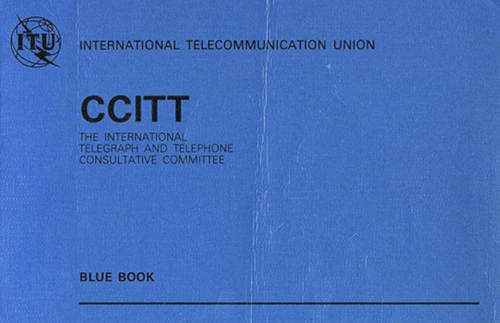In the realm of electronic messaging, the P-Series protocols emerge as a significant, albeit less discussed, cornerstone. These protocols, intricately woven into the fabric of the X.400 messaging standards, represent a pivotal chapter in the history of digital communication. Developed under the aegis of the International Telecommunication Union (ITU), the P-Series protocols were designed to standardize and enhance electronic messaging across disparate systems, aiming to achieve a level of interoperability that was ambitious for its time.
In this guide:
- Historical Context
- Technical Overview of P-Series Protocols
- Comparison with Modern Protocols
- Current Applications
- Conclusion
- References

1. Historical Context
The journey of the P-Series protocols begins in the 1980s, a period marked by rapid technological advancements and a pressing need for standardized communication protocols. The ITU’s Telecommunication Standardization Sector (ITU-T) undertook the ambitious task of developing the X.400 series, a suite of protocols intended to address the limitations of existing messaging systems.
The primary purpose of the P-Series protocols within this suite was to establish a reliable, universal framework for message handling systems (MHS). These protocols were designed to enable different email systems, often isolated and incompatible, to communicate seamlessly. They addressed key areas such as message transfer, access, and storage, ensuring that messages could be exchanged reliably and securely over a variety of network types.
P-Series protocols brought a level of formality and structure to electronic messaging, which was, at that time, an emerging mode of communication. Their development coincided with the burgeoning growth of computer networks, and they played a crucial role in shaping the early landscape of digital messaging. This era of development was marked by a vision to create a global messaging infrastructure, one that could transcend the limitations of proprietary systems and geographical boundaries.
In essence, the P-Series protocols, as part of the X.400 messaging standards, were not just technological advancements; they were a testament to the collaborative efforts aimed at unifying global communication in the digital age.
2. Technical Overview of P-Series Protocols
P-Series Protocols are a group of protocols that are part of the X.400 messaging standards. Five P-series protocols relate to messaging systems that support X.400, such as Microsoft Exchange Server:

P1 Protocol
P1 Protocol specifies the layout of messages transferred from one Message Transfer Agent (MTA) to another. This protocol specifies that X.400 messages consist of two parts: a P1 header, which acts as an envelope and must contain a globally unique recipient address for message routing and control purposes, and a P2 message, which is the actual content of the message.
P1 facilitates the routing and delivery of messages, handling tasks such as message encoding, decoding, and forwarding. It ensures that messages are transmitted reliably, maintaining the integrity and security of the contents.
P2 Protocol
P2 Protocol defines the format for transmitting the content of an X.400 message. This format includes a P2 header (which is not used because the P1 header provides the necessary routing information for the message) and a P2 body, which is the actual content of the message and consists of one or more body parts of various types (such as text, images, voice, or telex).
P3 Protocol
P3 Protocol specifies how a user agent (UA) communicates directly with an MTA for sending or receiving a message. This protocol is not used as often as the P7 Protocol for the same reason that Post Office Protocol version 3 (POP3) is used instead of Simple Mail Transfer Protocol (SMTP) to receive Internet mail.
P3 enables users to retrieve, manage, and store messages in a centralized repository. This protocol is vital for ensuring that messages are accessible even when the recipient is not connected to the network, thereby enhancing the flexibility and reliability of the messaging system.
P7 Protocol
P7 Protocol specifies how a UA communicates with a message store (MS) in order to selectively retrieve messages from the store and delete unwanted messages without downloading them.
This protocol is crucial for storing messages that have been delivered by the MTA but not yet retrieved by the recipient. P7 ensures that messages are securely stored and readily available for retrieval, playing a key role in maintaining the continuity of communication.
P22 Protocol
P22 Protocol is a 1988 revision of the P2 Protocol that clarifies and extends certain features of P2.
3. Comparison with Modern Protocols
When comparing the P-Series protocols with modern messaging protocols like SMTP (Simple Mail Transfer Protocol), both advantages and limitations become evident.
Advantages of P-Series Protocols:
- Structured and Formalized Communication: P-Series protocols offer a more structured and formal approach to messaging, with clear delineations of roles and responsibilities within the messaging infrastructure.
- Security and Reliability: These protocols were designed with a strong focus on security and reliability, making them suitable for formal, official, and sensitive communications, particularly in government and military contexts.
Limitations of P-Series Protocols:
- Complexity: The P-Series protocols are inherently more complex than SMTP, leading to more challenging implementation and maintenance.
- Flexibility and Scalability: While highly structured, these protocols lack the flexibility and scalability of SMTP, which has been a key factor in SMTP’s widespread adoption.
Advantages of SMTP:
- Simplicity and Ease of Use: SMTP is simpler and easier to implement, making it a more practical choice for a wide range of applications.
- Widespread Adoption: Due to its simplicity and effectiveness, SMTP has been widely adopted, ensuring broad compatibility across various systems and applications.
Limitations of SMTP:
- Security Concerns: SMTP, in its basic form, does not offer the same level of security and formalized message handling as the P-Series protocols.
- Reliance on Additional Protocols for Enhanced Functionality: To achieve similar levels of functionality as X.400, SMTP often relies on additional protocols, like IMAP or POP3 for message storage and retrieval.
In summary, while the P-Series protocols offer a robust and secure messaging framework, their complexity and lack of flexibility have limited their adoption compared to the more straightforward and widely compatible SMTP.
4. Current Applications
Despite being overshadowed by more contemporary protocols in many sectors, the P-Series protocols of the X.400 standard still find application in specific niches, particularly where their unique features are essential.
- Government and Defense:
- In several government and defense sectors worldwide, the structured and secure nature of the P-Series protocols makes them a preferred choice. The formal addressing and high reliability of these protocols align well with the stringent requirements of military and diplomatic communication networks.
- Aviation Industry:
- The aviation industry, especially in areas related to air traffic control and inter-organizational communication, occasionally employs X.400 protocols due to their robustness and reliability in mission-critical environments.
- Legacy Systems Integration:
- Certain organizations continue to use legacy systems that rely on X.400 protocols. In these instances, the P-Series protocols facilitate integration and communication with more modern systems, ensuring continuity and stability.
- International Organizations:
- Some international organizations, which established their communication infrastructure when X.400 was prevalent, continue to use these protocols, especially for formal and official correspondence.
5. Conclusion
The P-Series protocols, while not at the forefront of modern networking solutions, still hold a place in specific sectors where their particular strengths are required. Their robustness, formal communication structure, and high-security features make them suitable for applications where these attributes are non-negotiable. However, for most everyday applications, newer and more flexible protocols like SMTP have taken precedence. The P-Series protocols serve as a reminder of the evolution of digital communication standards and continue to be a relevant study subject in understanding the development of electronic messaging systems.
6. References
- RFC 1506 – “A Tutorial on Gatewaying between X.400 and Internet Mail”.
- RFC 5321 – “Simple Mail Transfer Protocol”.
- “Computer Networks” by Andrew S. Tanenbaum, which provides foundational knowledge on various networking protocols, including X.400.
- RFC 822 – “Standard for the Format of ARPA Internet Text Messages,” for insights into the development and structure of messaging protocols.
- X.400, by Network Encyclopedia